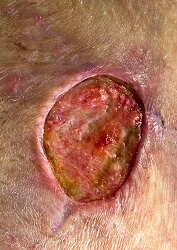Abstract
Background
Mastocytosis is a heterogeneous disease characterized by a clonal expansion of mast cells in various organs. The vast majority of patients suffer from signs and symptoms caused by mediator release from mast cells. Although the disease burden is high, there is currently no specific and validated instrument to measure and monitor signs and symptoms in patients with mastocytosis.
Objective
To develop and validate a disease-specific tool to measure and monitor the activity of signs and symptoms in patients with mastocytosis, the Mastocytosis Activity Score (MAS).
Methods
Nineteen potential MAS items were developed in a combined approach consisting of semi-structured patient interviews, expert input, and literature research. Item selection was performed by impact analysis with 76 patients followed by a review for face validity. The resulting MAS was tested for validity, reliability and influence factors. In parallel, a US American-English version of the MAS was developed.
Results
68 mastocytosis patients took part in the MAS validation study. The final 9-item MAS was found to have a three-domain structure ('skin', 'gastrointestinal tract', 'other'), a valid total score and an excellent test-retest-reliability. Multiple regression analysis revealed that disease duration, age, or gender are no significant determinant of the MAS results.
Conclusions
The MAS is a disease-specific, valid and reliable patient reported outcome measure for adult patients with cutaneous and indolent systemic mastocytosis. It may serve as a valuable tool to measure and monitor mastocytosis activity, both, in clinical trials and in routine care.
This article is protected by copyright. All rights reserved.
http://ift.tt/2EKknev












